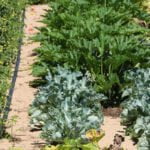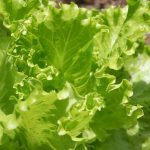Vegetable gardening in Virginia is a popular and rewarding activity for many residents, thanks to the state’s favorable climate and soil conditions. Whether you’re a seasoned gardener or new to the practice, knowing which vegetables thrive in Virginia can make all the difference in your garden’s success.
When it comes to vegetable gardening in Virginia, certain plants are better suited to the region’s unique climate and soil composition. From tomatoes and peppers to squash and leafy greens, there are plenty of options for eager gardeners to choose from. Understanding which vegetables grow best in Virginia can help you plan and design a garden that will flourish throughout the growing season.
In this article, we will explore the top vegetables that thrive in Virginia’s climate and soil conditions. We’ll also provide tips on planning and designing your vegetable garden for success, preparing the soil, proper planting and maintenance techniques, as well as seasonal planting calendars specifically tailored for Virginia. Additionally, we’ll offer valuable insights on special considerations and tips for vegetable gardening in Virginia, such as dealing with hot summers and cold winters.
Whether you have limited space or poor soil quality, we’ll also be covering how to successfully grow vegetables in containers. Lastly, we’ll share essential advice on harvesting and preserving your garden’s bounty for future use in Virginia’s climate.
Planning Your Vegetable Garden
When planning your vegetable garden in Virginia, it’s crucial to consider the state’s unique climate and soil conditions. By carefully selecting the right vegetables and strategically designing your garden, you can maximize your chances for a successful harvest. Here are some tips and advice to help you plan and design your vegetable garden for success in Virginia:
1. Choose the Right Vegetables: Consider the top vegetables that thrive in Virginia’s climate, such as tomatoes, peppers, squash, cucumbers, and leafy greens like lettuce and spinach. These vegetables are well-suited to Virginia’s warm summers and relatively mild winters.
2. Design Your Garden Layout: Whether you’re starting a traditional in-ground garden or creating raised beds or container gardens, it’s important to plan out your garden layout. Take into account factors such as sunlight exposure, water access, and potential obstacles like trees or structures that may affect plant growth.
3. Consider Succession Planting: To maximize your harvest throughout the growing season, consider succession planting different crops. This involves planting new seeds or transplants as soon as previous crops are harvested, ensuring a continuous supply of fresh vegetables.
By carefully planning and designing your vegetable garden in Virginia, you can set yourself up for a bountiful harvest of fresh produce that thrives in the state’s specific climate and growing conditions.
Preparing the Soil
When it comes to vegetable gardening in Virginia, one of the most important factors for success is preparing the soil. Virginia’s varying climate and soil conditions can present unique challenges for gardeners, but with proper soil preparation, you can set your vegetable garden up for a bountiful harvest. Here are some essential steps to prepare the soil for your vegetable garden:
Soil Testing
Before planting your vegetable garden, it’s crucial to have your soil tested. Soil testing will provide valuable information about the pH level and nutrient content of your soil, allowing you to make informed decisions about which amendments are needed. In Virginia, you can send your soil sample to the Virginia Cooperative Extension or use a commercial soil testing service.
Amendment Recommendations
Based on the results of your soil test, you may need to amend your soil to create an optimal growing environment for your vegetables. Common amendments in Virginia include adding lime to raise the pH level, incorporating organic matter such as compost or manure to improve soil structure and fertility, and adding specific nutrients based on deficiencies identified in the soil test.
Keep in mind that different vegetables have specific nutrient requirements, so it’s essential to tailor your amendments accordingly.
Soil Preparation
Once you have received your soil test results and amendment recommendations, it’s time to prepare the soil for planting. This may involve tilling the earth, mixing in organic matter and amendments, and leveling the ground for planting. Properly prepared soil provides a healthy foundation for strong root systems and vigorous growth in your vegetable garden.
By following these guidelines for preparing the soil, you can ensure that your vegetable gardening in Virginia gets off to a great start. Taking the time to understand and improve your soil will lead to healthier plants and a more abundant harvest throughout the growing season.
Planting and Maintenance
When it comes to vegetable gardening in Virginia, proper planting techniques are crucial for the success of your garden. It’s important to consider the specific needs of each vegetable and plant them at the right time and in the right location. Some popular vegetables to grow in Virginia include tomatoes, peppers, squash, and cucumbers. These warm-season vegetables thrive in Virginia’s climate and can be planted after the last frost date, typically around mid-April.
Once your vegetables are planted, regular maintenance is essential to ensure healthy growth and a bountiful harvest. This includes regular watering, especially during hot and dry periods, as well as fertilizing with organic matter or compost to provide essential nutrients. Additionally, it’s important to monitor for pests and diseases that can affect your vegetable plants.
Common pests in Virginia include aphids, cabbage worms, and tomato hornworms. Integrated pest management techniques such as handpicking pests or using natural predators can help keep these issues under control without the use of harmful chemicals.
Many vegetable plants require some form of support to help them grow efficiently and produce higher yields. For example, tomatoes and cucumbers benefit from sturdy cages or trellises that keep their vines off the ground and reduce the risk of disease. Additionally, using mulch around your vegetable plants can help retain moisture in the soil, control weeds, and regulate soil temperature – all crucial factors for successful vegetable gardening in Virginia’s climate.
Seasonal Planting Calendar
When it comes to vegetable gardening in Virginia, one of the most crucial aspects to consider is when to plant specific vegetables throughout the year. Virginia’s climate and soil conditions vary by region, so it’s essential to have a detailed seasonal planting calendar to ensure a successful harvest.
In the early spring, cool-season vegetables like lettuce, spinach, kale, and peas can be planted as soon as the ground thaws and is workable. These vegetables can withstand cooler temperatures and even some light frost, making them perfect for Virginia’s unpredictable spring weather. As the weather warms up, transitioning to warm-season vegetables such as tomatoes, peppers, squash, and cucumbers can begin.
Summer in Virginia can bring sweltering heat, so proper care and attention are needed for your vegetable garden during this time. Adequate watering and mulching are essential to help retain moisture in the soil and protect plants from extreme temperatures. Additionally, keeping an eye out for common pests and diseases that thrive in hot, humid conditions is crucial for maintaining a healthy garden.
In the fall, cool-season crops should be planted once again for a late harvest. Vegetables like carrots, beets, radishes, and leafy greens can thrive in the cooler temperatures of autumn while also enriching the soil for future growing seasons. Properly timing the planting of these vegetables is key to maximizing their growth potential before winter sets in.
Having a detailed seasonal planting calendar tailored specifically to Virginia’s climate will help any gardener successfully navigate the challenges of growing vegetables throughout the year. By following these guidelines and adapting them based on local conditions and microclimates within the state, individuals can enjoy a bountiful harvest from their vegetable gardens in Virginia.
Virginia-Specific Gardening Tips
When it comes to vegetable gardening in Virginia, there are several important considerations to keep in mind to ensure a successful harvest. One of the key factors to take into account is the state’s climate, which includes hot summers and cold winters.
It is crucial to select vegetable varieties that are well-suited for these temperature extremes. For example, heat-tolerant vegetables like tomatoes, peppers, and okra thrive in Virginia’s warm summers, while cold-hardy vegetables such as kale, carrots, and broccoli can withstand the winter chill.
In addition to temperature variations, Virginia also experiences high levels of humidity during the summer months. This can create favorable conditions for certain plant diseases, so it’s essential to choose disease-resistant vegetable varieties and practice good garden hygiene to minimize the risk of fungal and bacterial infections. Furthermore, providing adequate air circulation and spacing between plants can help reduce the likelihood of disease development in your vegetable garden.
Another important aspect of vegetable gardening in Virginia is water management. While hot summers may necessitate regular watering to keep plants hydrated, excessive moisture can lead to certain issues like root rot. Using mulch and drip irrigation systems can help conserve water and maintain optimal soil moisture levels for your vegetables throughout the growing season.
Finally, it’s crucial for Virginia gardeners to be mindful of potential pest pressures. Common pests such as aphids, caterpillars, and squash bugs can pose a threat to your vegetable crops. Employing integrated pest management strategies that include natural predators, physical barriers, and organic insecticides can help protect your garden from harmful pests while minimizing environmental impact.
| Vegetables Thriving in Virginia | Recommended Varieties |
|---|---|
| Tomatoes | Roma, Better Boy |
| Peppers | Jalapeno, Bell Pepper |
| Kale | Lacinato Kale (Dinosaur Kale) |
| Carrots | Nantes Carrot, Danvers Carrot |
Container Gardening in Virginia
One of the challenges that many Virginians face when it comes to vegetable gardening is limited space or poor soil quality. Fortunately, container gardening offers a practical solution for those who want to grow their own vegetables without the need for a traditional garden plot. With the right approach and techniques, you can successfully grow a variety of vegetables in containers, regardless of the constraints you may have.
Choosing the Right Containers
When it comes to container gardening in Virginia, selecting the right containers is crucial for success. Look for pots or containers that are at least 12 inches deep and have adequate drainage holes to prevent waterlogging. Consider using options such as fabric grow bags, large plastic or ceramic pots, or even repurposed items like buckets or barrels.
Soil and Plant Selection
The key to successful container gardening in Virginia is using high-quality soil mix specifically formulated for container planting. Look for a well-draining potting mix that also retains moisture. Additionally, select vegetable varieties that are well-suited for container growth, such as tomatoes, peppers, lettuce, beans, and herbs. Avoid planting oversized or deep-rooted vegetables in small containers.
Care and Maintenance
Proper care and maintenance are essential for thriving container vegetable gardens in Virginia. Regular watering is crucial, as containers tend to dry out faster than traditional garden beds. Fertilize your plants with a balanced fertilizer according to their specific needs and keep an eye out for pests and diseases common in container gardening. Additionally, consider rotating your containers throughout the day to ensure all sides receive adequate sunlight.
By following these tips and techniques for successful container gardening in Virginia, you can enjoy fresh homegrown vegetables even if you have limited space or poor soil conditions. With proper planning and care, you can create a bountiful harvest from your containers throughout the growing season.
Harvesting and Preserving
In conclusion, vegetable gardening in Virginia offers a wide range of opportunities to grow your own fresh and healthy produce. By following the tips and advice provided in this article, you can successfully plan, plant, and maintain a thriving garden in Virginia’s unique climate and soil conditions.
One of the key aspects of vegetable gardening in Virginia is knowing when to harvest your vegetables and how to properly store and preserve them for future use. By carefully monitoring the maturity of your crops and following the recommended harvesting techniques, you can ensure that you enjoy the best flavor and nutritional value from your home-grown produce.
Additionally, learning about proper storage and preservation methods will help you extend the life of your harvest and enjoy it throughout the year.
Whether you have a large backyard or limited space, vegetable gardening in Virginia can be tailored to suit your needs. From traditional garden beds to container gardening, there are options for everyone to experience the joy of growing their own food.
With careful planning, soil preparation, and maintenance, you can create a bountiful garden that provides fresh vegetables for you and your family throughout the growing season. So roll up your sleeves and get ready to dig into the world of vegetable gardening in Virginia.
Frequently Asked Questions
What Vegetables Are Good to Grow in Virginia?
The vegetables that grow well in Virginia include tomatoes, peppers, squash, cucumbers, beans, and leafy greens like lettuce and kale. Root vegetables like carrots and beets also thrive in the state’s climate.
When Should I Start Planting My Garden in Virginia?
In Virginia, the best time to start planting your garden is typically in early spring, around late March or early April. This allows the soil to warm up and reduces the risk of frost damaging seedlings.
Is Virginia Good for Gardening?
Virginia is great for gardening due to its diverse climate and soil conditions. Different regions of the state offer varying growing conditions, making it possible to cultivate a wide range of fruits, vegetables, and flowers throughout the year. With proper care and attention to local growing guidelines, gardening in Virginia can be very rewarding.

If you’re looking to get into vegetable gardening, or are just looking for some tips on how to make your current garden better, then you’ve come to the right place! My name is Ethel and I have been gardening for years. In this blog, I’m going to share with you some of my best tips on how to create a successful vegetable garden.





